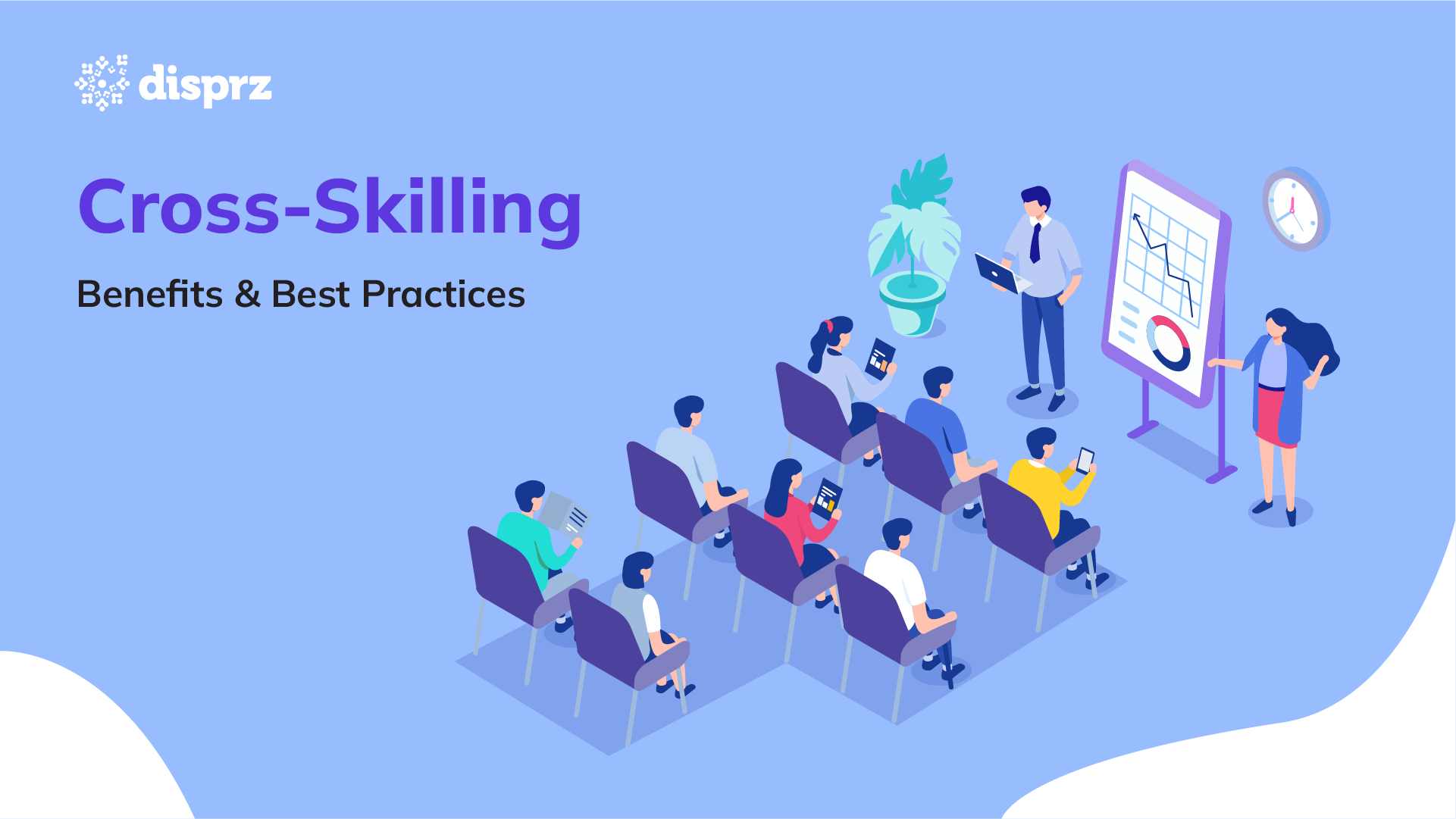
Government agencies are left to manage ambiguous budgets and shifting workforce structures while continuing to advance their mission due to the constant revision of federal policies and executive orders. The key to managing this uncertainty and maintaining efficiency? Upskilling and cross-skilling.
Tony Holmes, Pluralsight’s Practice Lead for Solutions Architects Public Sector, explains why cross-skilling and expert generalists are essential for increasing agencies’ adaptability and maximizing IT workforce potential amidst change.
The rapidly changing government landscape calls for an agile IT workforce
The Trump administration has introduced rapid changes and new executive orders. As a result, government agencies at all levels—federal, state, and local—face budget cuts, workforce reductions, and increasing demands.
Upskilling and cross-skilling allow you to build resilient teams with versatile skills. This improves your agency’s efficiency in a few ways:
Fewer employees can manage responsibilities across domains, helping you make the most of your existing headcount
Teams with broader expertise can pivot as priorities change, ensuring continuity even during workforce or budget fluctuations
Technologists with broad skill sets can proactively identify challenges and develop effective solutions
Success in this shifting landscape requires you to rethink your technology roles and the skills people need to succeed.
“We’ve been conditioned to believe that if something doesn’t fit the mold, it must be wrong,” said Tony. “If a skillset doesn’t match our predefined checklist, the person isn’t qualified. Something must have gone wrong if our career path is not straight forward. But what if the issue is mold itself? The problem that we have in our organizations isn’t a lack of talent. It’s that we’ve made it harder and harder to recognize talent unless it looks exactly the way that we expect it to.”
Embracing expert generalists and diverse skill sets for technology roles
Rather than looking for people who are experts in a single field, Tony encourages agencies to cross skill and consider the power of expert generalists for tech roles.
“We’ve been told that the best way to solve complex problems is to find the best experts, the person with the deepest knowledge in that domain, or the one who spent years refining their skillset in a particular area,” said Tony.
“And that does work until the problem doesn’t fit inside a single domain anymore. The fact of the matter is that the majority of the greatest challenges we face today are unrestricted by technology. Expert generalists don’t have these boundaries because they don’t rely on a single area of expertise. They can pull from a broad range of subjects and disciplines to solve complex business technology problems.
Common traits of expert generalists in the workplace
Famous expert generalists include Isaac Newton, Aristotle, Steve Jobs, Albert Einstein, and Leonardo Da Vinci. In the workplace, expert generalists often display these traits:
Resilience: They stay productive and keep a level head, even when things go wrong
Curiosity: They’re problem solvers who ask questions, transfer knowledge, and always look for better answers
Creativity and resourcefulness: They know where to look to find solutions, even in places where no one else is thinking to look
Cross-skilling in action: Government use cases in AI and security
Cross-skilling can, in practice, solve important issues that agencies face today. Navigating AI and emerging technologies
“We are rushing to hire AI specialists in the belief that artificial intelligence is a field of its own, something separate that requires a brand new category of expertise,” said Tony. “But artificial intelligence isn’t a standalone discipline. It’s a tool that enhances existing fields.”
“It’s not replacing jobs, it’s replacing tasks that rely on memorization, routine execution, and fixed patterns. The people who will thrive are those that can apply knowledge in unexpected ways, connect ideas, and navigate that uncertainty,” said Tony.
Cross-skilling allows technologists to pull from various domains and use AI to its fullest potential.
Enhancing cybersecurity with limited security professionals
When layoffs impact critical roles like cybersecurity, there are fewer professionals to identify, respond to, and mitigate risks. Equipping general IT professionals with cybersecurity expertise can help them protect government systems, improve security response times, and build resilience to somewhat mitigate lost headcount.
Cross-skilling is essential for creating expert generalists in your company. “I’m not advocating for a complete overhaul and telling you to go and fire all your specialists tomorrow and replace them with generalists. Specialists still have a critical role to play within our tech organizations,” said Tony.
But many organizations would benefit from balancing the number of specialists and generalists within their workforce. Here’s how they can do just that.
1. Provide access to vetted, hands-on learning platforms
“If we want more [expert generalists], we need to stop forcing people to stay in a single lane and start encouraging people to study broadly. That’s why the foundation of technology teams is access to high quality, relevant, and up-to-date curated learning from instructors that are considered by their peers as experts in their field,” said Tony.
Expert generalists who use high-quality learning solutions have access to the resources they need to improve their skills in a variety of fields, including AI, cloud computing, and data. They also give specialists the opportunity to go deeper and build up their expertise even more.
When assessing tech skill development solutions, look for ones that offer hands-on learning. Tony provided an explanation for this: “Theoretical knowledge from videos alone is not sufficient.” It’s one thing to know that breadth of knowledge is valuable, but knowledge without application is just memorization of trivia. Hands-on learning is the way to develop transferable skills.”
Pluralsight’s hands-on tech skill development platform features 2,500+ expert instructors. Our authors are vetted through a rigorous selection process and 91% have at least 10 years of experience, ensuring high-quality instruction. Find out more about our solution for upskilling.
2. Use learning analytics to understand and invest in your team’s interests
You may already have existing or budding expert generalists in your organization. You can use the information you gain about what your teams are learning to pique their interest in other fields. Take, for instance, the profile of a person with strong data analytics skills. They’re also focused on building their cloud skills and show emerging proficiency in security, software development, and lifecycle and risk management.
They’re clearly interested in broadening their skills—but why?
“They could be someone who’s just driven to grow and explore,” explained Tony. It could indicate a natural expert generalist who is interested in comprehending the larger picture. It could show someone who’s bored in their role and no longer challenged. They’re looking for a career change.”
This information equips you to have productive conversations with employees about career opportunities. You’re not just building expert generalists, you’re potentially boosting retention in the process.
If you don’t have learning analytics right now, ask your people what they’re interested in. “People will more than happily tell you what they’re passionate about in technology. You only need to listen, Tony said.
3. Create opportunities for internal talent mobility
Giving your workforce opportunities to learn new skills on the job is another way to develop expert generalists. “Right now, we tell people that we expect them to upskill on their own time, maybe nights, weekends, or when their real work is done,” said Tony. “We make them feel like exploring beyond their role is a distraction rather than an asset. And then we act surprised when they take those new skills and go use them somewhere else.”
Instead of forcing employees to learn on their own, provide internal mobility opportunities with job rotations. These are temporary placements in other teams, not permanent role changes, that allow employees to test the waters and gain experience in other roles.
Tools like Role IQ can also help you benchmark roles across your organization. Employees will be able to cross-train for new roles before applying if you create Role IQs that are in line with internal roles and ensure that everyone can see them. “What most companies don’t realize is that giving people internal career mobility is a competitive advantage for your organization. Imagine if you could spot the hidden talent before they leave for another opportunity. Imagine being able to fill internal gaps more quickly without having to spend a lot of money hiring outside workers,” Tony added. Develop your workforce’s skills in important technology areas. Tony stated, “The biggest mistake organizations make is failing to recognize the talent that they already have.” This is not a lack of training. With Pluralsight’s hands-on skill development platform, you can create tech teams that are more capable and adaptable across all disciplines. Learn more about how Pluralsight helps agencies build critical tech skills.







